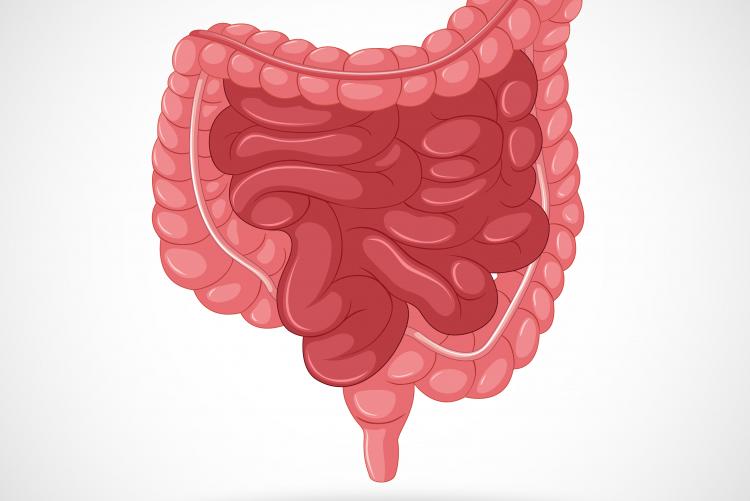PHYSIOLOGY OF THE GASTROINTESTINAL TRACT (GIT) Main function: The GIT
provides the body with a supply of water, nutrients, electrolytes, vitamines. Actions: 1) Digestion
of the food 2) Absorption of the products of digestion Ad 1) Digestive processes: - mechanical -
chemical Mechanical methods: - mastication (chewing) - swallowing (deglutition) - movements
of the GIT (motor functions) Chemical means (secretions): - saliva - gastric juice - pancreatic
juice - intestinal juice - bile PHYSIOLOGY OF MOUTH Functions: 1/ Mechanical and
chemical digestion of the food 2/ The source of the unconditioned reflexes 3/ Control of physical
and chemical properties of the food Ad 1 a Mechanical activity – mastication The anterior teeth –
a cutting action The posterior teeth – a grinding action Thee maximal closing force - incissors 15
kg - mollars 50 kg Inervations of the muscles of chewing – 5th, 8th, 12th cranial nerves Centers
– near the brain stem and cerebral cortex centers for taste Act of mastication: The movement of
the lower jaw down: - Contraction of m. biventer mandibulae (m.digastricus), m. pterygoideus
ext., m.m. infrahyoidei → The movement – up: the drop initiates a stretch reflex Contraction of
m. masseter, m. temporalis, m. pterygoideus Rebound of antagonists- inhibition – the jaw drops
+ compression of the bolus of the food against the linings of the mouth - rebound – repetitive
actions..... Mastication reflexive and voluntary Function of the mastication: - grinding the food -
mixing with saliva - prevention of excoriation of GIT - makes easy swalowing 2 - aids
subsequent digestion SALIVATION Ad 1 b) Adjustment of the food by the saliva The salivary
glands: - parotid - submandibular - sublingual - buccal Secretion of the saliva: - basal - 800 –
1500 ml/day - during intake of food Regulation of salivary secretion – nervous - parasympathetic
- sympathetic Unconditioned reflexes: Taste and tactile stimuli increase 8-20 times the basal rate
of secretion Conditioned reflexes: Visual, olphactoric, acoustic stimuli Centers: salivatory nuclei
(at the juncture of the medulla and pons): superior – submandibular (70%), sublingual (5%)
inferior – parotid (serous saliva) Parasympathetic nerves: n.VII, n.IX – stimulation of the
salivation. Parasympathetic nerves – acetylcholine – kallikrein – alpha 2 globuline (plasma) –
bradykinine – vasodilatation – stimulation of the secretion of saliva (serous) Sympathetic nerves:
stimulation of the secretion of the mucinous saliva Composition of the saliva 99.5 % - water; 0.5
% substances – organic – 0.3 % - anorganic – 0.5 % Organic substances: Mucin, digestive
enzymes – ptyalin, lingual lipase, proteolytic enzymes, cytochromoxidase, carbanhydrase,
phosphatase, IgA, lysozyme, blood groups s.... Cells: leukocytes,epithelial cells,... Anorganic
substances: Na+ , K+ , Cl- , HCO3 - Functions of saliva Saliva - keeps the mouth moist, aids
speech - facilitates swallowing - serves as a solvent for the molecules that stimulate the taste
buds - serves a solvent for irritating foods - helps wash away the pathogenetic bacteria, - destroy
bacteria (thiocyanate ions, proteolytic enzymes),by proteins antibodies 3 can destroy oral
bacteria, lysozyme = antibacterial - keeps the mouth and teeth clean Deficient salivation =
xerostomia Swallowing (Deglutition) Three stages: 1) oral – voluntary – the food is squeezed
into the pharynx by tongue 2) pharyngeal – automatic – cannot be stopped (1 s) Involuntary
contraction in the pharyngeal muscles – that pushes the food into the oesophagus. Concomitant
actions: Inhibition of respiration, closing of the posterior nares by the soft palate, pulling the
larynx upward (enlargement the opening of the oesophagus), glottic closure Control of the
pharyngeal stage of swallowing -swallowing reflex: Swallowing center – in the medulla and
lower pons Afferent nerves – Vth, VIIth, IXth, Xth Coordination of the swallowing with
respiration 3) oesophageal stage of swallowing: Oesophagus - the first third striated muscle - the
last third smooth muscle - the middle – mixed Innervation – n. vagus, sympathetic nerves and
others endings Function – to transport food from the pharynx to the stomach by gravity and by
peristalsis Peristalsis – primary = a continuation of the peristaltic wave from pharynx - secondary
waves result from distention of the oesophagus by the retained food. Speed 4 cm/s The
swallowing time – for a compact food 6-9 s a fluid 4-5 s Regulation of the oesophageal
peristalsis: - by intrinsic neural circuits – myenteric and submucosal plexus - by vagal efferent
fibers Functions of the upper and lower oesophageal sphincters Upper – pharyngoesophageal
junction – 3 cm segment – with high resting tone – relaxes reflexly upon swallowing Lower –
cardia – sphincter cardiae – 2-5 cm above the juncture of the oesophagus with the stomach.
Circular muscle – tonically constricted. Receptive relaxation – allows propulsion of the
swallowed food into the stomach. The relaxation through VIP

